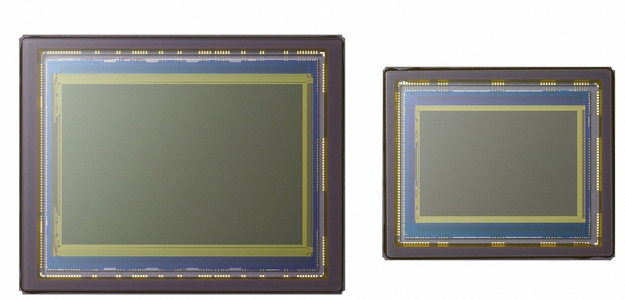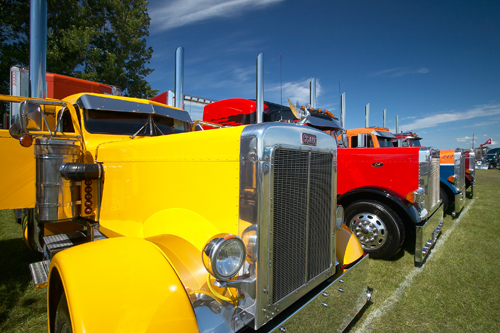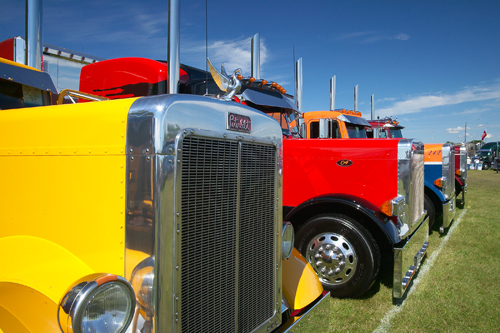Question
It’s time for me to replace my EOS 30D and I am trying to decide whether to buy an EOS 50D with a small 22.2 x 14.8 mm sensor or the EOS 5D Mark II with the huge full frame 24x36mm sensor. Apparently, larger sensor size is a major advantage. Do you agree? Are full-frame sensor cameras better regardless of the brand? Which is the best bet for a serious amateur photographer? S.W.
Answer
These two EOS camera are similar in many respects, employing the latest technology. But they do differ in feature set, size and weight and other aspects. Start by comparing their Specifications charts and read Reviews re: performance and image quality at various ISO levels. (Also check out Canon’s White Paper on both cameras at www.usa.canon.com:80/dlc/controller?act=GetArticleAct&articleID=1787 ). For instance, you’ll find that the EOS 5D Mk II provides higher (21.1 vs. 15.1 megapixel) resolution and an HD video mode but the EOS 50D is equipped with a built-in flash and a faster Continuous Drive mode (6.3 vs. 3.9 frames per second).
Frankly,15.1 megapixel resolution is plenty for the vast majority of photo enthusiasts. But yes, sensor size is also an important consideration. The larger sensor allows for larger pixels (or photosites) — 6.4 vs. 4.7 microns square in the EOS example — for greater light gathering efficiency that can provide wider dynamic range and “cleaner” images at high ISO levels. But there’s another more important consideration too, depending on the lenses you already own. The multi-platform EF lenses (suitable for a 35mm SLR or a digital EOS camera regardless of sensor size) or the smaller EF-S series (intended only for the small sensor EOS models.)
Because a 24x36m chip is the same size as a frame of 35mm film, any multi-platform lens provides the same angle of view as it did on a conventional film camera. Regardless of the brand of camera/lens, a full-frame DSLR would be ideal for anyone who already owns multi-format wide angle and ultra-wide lenses (such as a 20-35mm zoom) and does not want to buy a new lenses (such as a 10-22mm zoom). On the other hand, a telephoto lens has greater effective “reach” on a small sensor camera because of the so-called “focal length magnification factor”, actually caused by field of view crop with a small sensor camera. That can be an important consideration if you prefer wildlife or sports photography (with any telephoto lens.)
As my comments should indicate, there’s no single answer that’s right for everyone. Aside from the issues already mentioned, there’s also the price difference. The cost of a 24x36mm sensor – plus the other oversized components required to support that technology — makes a full-frame DSLR too expensive for most photo hobbyists. In any event, your decision should not be difficult to make. Consider your budget, the types of subjects you most often shoot as well as the lenses you already own. Then select the camera that’s “best”: the one that makes the most sense considering your own circumstances.



Mark
11 May 2009I had the same dilemma between choosing the upgrade and ended up going with 5D markII. I’m so glad I spend the extra money and opened a door to a whole new level of creativity. My suggestion if you can afford it buy a full frame, it’s well worth it!!!
rhermans
11 May 2009Agree with almost everything, only the last pictures imho gives a false image. I would like it to see the second image taken by a 13mm lens, so you see that the result is the same, but that you need another lens. Otherwise take a picture with a 300 mm telelens with both camera’s.
dmojavensis
11 May 2009The first picture incorrectly shows the relative sizes of the full frame and APS-C sensors. APS-C sensor is much closer to full-frame than the picture shows. The smaller sensor shown is not even 3:2 aspect ration (looks more like 4:3 :))
Shown are probably APS-C and 2/3″ compact camera sensors.
dmojavensis
11 May 2009I think one major advantage of a full-frame camera which is missed in the article is that you get 1.5-1.6x shallower depth of field provided the same aperture and angle of view (for which you have to use 1.5-1.6x shorter lens on an APS-C camera).
This is a BIG advantage if you need extremely shallow DOF.
There’s a slight advantage for landscape photography with APS-C cameras where greater DOF is usually required.
P.S. For more explanation see – http://www.lawrenceripsher.com/blog/2008/12/canon-5d-mark-ii-review-the-series-part-4.html
PeterKBurian
12 May 2009Reply from Peter Burian:
Great to see so many comments about a short Q&A item.
fyi, the truck photos were both taken with an EOS 1Ds (full-frame) camera. At different focal lengths, to illustrate a concept: the field of view you get in a photo with a full-frame sensor vs. an APS-C size sensor at a certain focal length. (Both are 3:2, the same aspect ratio produced by a full-frame DSLR or by a DSLR with an APS-C size sensor. Copy the photos and check that out for yourself, if you wish.)
Yes, there are other issues, such as depth of field. However, a Q&A item is about 500 words – plus two photos – so I cannot cover or illustrate every aspect of a topic.
I am working on longer articles re: full-frame DSLRs for Photocrati.
Cheers!
Peter Burian
PeterKBurian
12 May 2009re: Sensor Sizes (aspect ratio)
Oh, the comment about aspect ratio was re: the Sensor Size illustration.
Yeah, you’re probably right.
I’ll see if I can find a side-by-side photo of large vs. small 3:2 sensors. I did a lot of searching and amazingly, this type of illustration is almost impossible to find.
Peter
PeterKBurian
12 May 2009NEW PHOTO OF SENSORS
I found a more accurate photo of sensors — full-frame vs. APS-C size — so we deleted the previous illustration and published this new photo instead.
Peter
http://www.peterkburian.com
Daniel Codnurachi Fotograf Iasi
13 May 2009I would buy the Canon 5D mk II and use it in M quality meaning half megapixel, but RAW if possible.
Fotomanijak
14 May 2009Fullframe for the serious amateur – think not!
Besides the obvious advantages of fullframe digital camera body, there are few disadvantages, such as the price!
First the price of the DSLR body, for fullframe you have to spend at least 50% more money. And that’s not all.
The choice of lenses, in first you are limited to only the fullframe lenses – which are also cost much more.
And in the end fullframe DSLR simply requires only top quality lenses, in case of Canon only L, and not even all L lenses will perform good on a fullframe body.
Also there are few other things to consider, such as much larger RAW files requires more storage space, larger memory cards, more space for backup. Also larger RAWs requires more power from the computer when you are working on them.
Imagine just one TIFF from the Hasselblad H3DII-39MS – takes something about 250 MB in space, when you open such a file in photoshop, while the Canons 50D RAW(14bit) take about 25MB, imagine the difference in post processing time.
PeterKBurian
14 May 2009Yes, there are drawbacks.
I have written a longer article about the pros and CONs of full-frame sensors but that won’t be published for at least another week.
Peter Burian
Bogdan Petrea
20 May 2018I know this is an old post, but I still read it and you make me to remember about my old canon 5D mark II, it was a great camera.